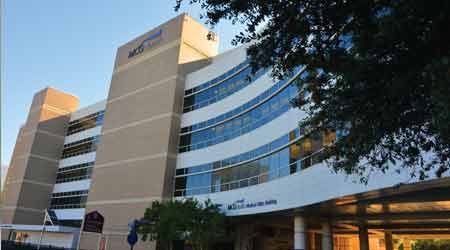Healthcare Facilities Retrofits: Making Available Money Work
Part 3 of a 4-part article on retrofits in healthcare facilities
The process of specifying products that will go into retrofits and upgrades has become especially important — and challenging — as facility budgets have tightened and the scrutiny on managers’ spending decisions has intensified.
“Funding comes sporadically, so when we get funding to make investments in products, we want to buy products that are going to give us the best useful life,” Miller says. “Durability is the main thing, along with understanding how to care for it and seeing how well it adapts to our
existing facilities.”
The lighting upgrade the Augusta University Medial Center reinforces the need for managers and their staffs to make informed decisions in specifying products for projects.
“With lighting, you have to be especially careful with certain technologies,” Miller says. “With the first parking deck we (retrofitted), we went with a completely different brand of lighting. We’ve had problems with the performance of the lighting, and we’ve had to work with the provider to get replacement lights. So that has not gone as smoothly as we had hoped, and it caused us to take a closer look at that brand of lighting. We ended up using a completely different LED fixture in the other three decks, and we’ve seen better performance out of them.”
One possible remedy for this problem is to involve staff in the process as early as possible — something Miller did in planning one plumbing upgrade.
“When we did the water-reduction project, we brought in our key mechanics who work on the flush valves and put in some test fixtures in key locations so we could get feedback not only from our technicians but also from management to see how (the fixtures) perform,” he says. “We tried different fixtures to see which ones we liked best, and we brought the mechanics in on that. There was not much support among the mechanics for that specific project because back in the ‘80s, water-reduction fixtures were pushed a lot into healthcare facilities, and they didn’t perform real well. All of us have a memory of that and were hesitant to do this. But their feedback was important, and they helped select the type of fixtures.”
The results of the plumbing retrofit reinforced the benefits of staff involvement.
“We dropped our consumption about 6 percent, but our water rates are so good that it has not had a huge financial impact,” Miller says. “But we’re comfortable with that because our water use was continuing to trend upward, and this has really made a big impact on our consumption.”
Putting together the entire upgrade package in order to achieve the project’s goals in some cases involves revisiting and rethinking some early goals and assumptions.
Harubin points to the upgrade project that involved adding a 1 megawatt emergency generator.
“We went into the design phase and looked at probably eight different ways to add generation to the campus, and we settled on a particular way that the engineers and my group felt was the most advantageous,” he says. “The estimating looked good, so we went to the market, but it was about $400,000 over the price tag.
“We had a real challenge trying to figure out how to maintain as much of the original positive features related to reliability and safety and flexibility, as well as the ability to operate these emergency power supply systems to support the hospital in the event of a long-term outage with minimal staff. That re-evaluation, knowing that we had to reduce and reduce and reduce many features, as well as knowing we had to reduce risk in any way to the patients, was very stressful and challenging in finding an alternative solution.”
Related Topics:













